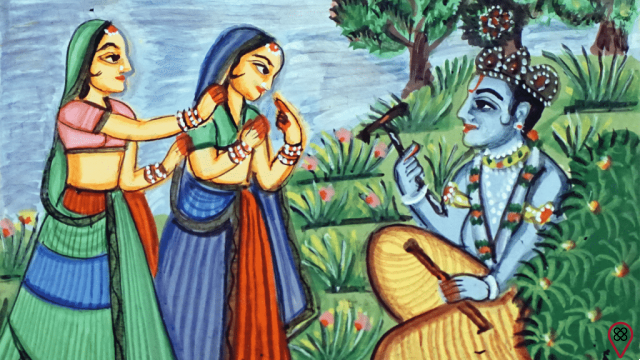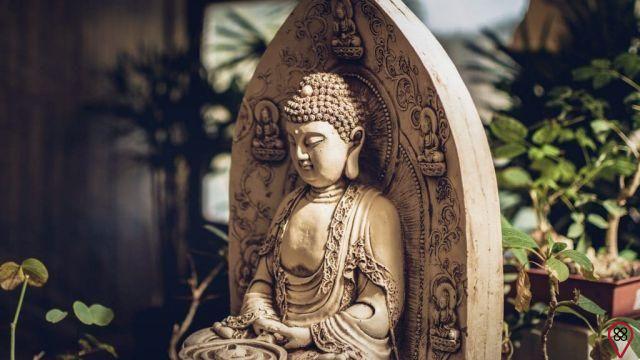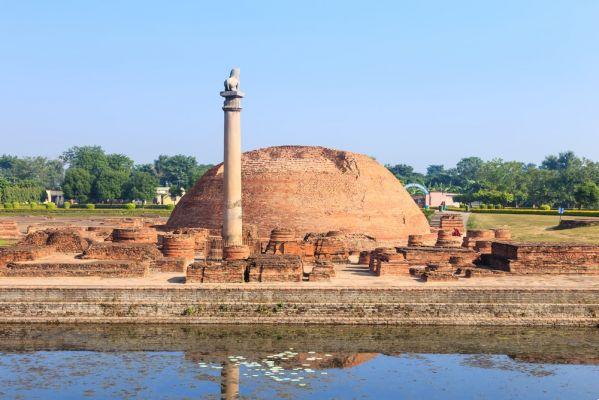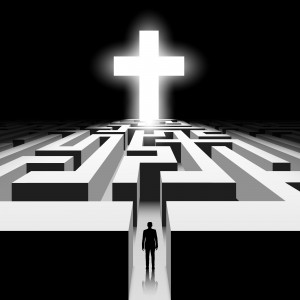If you know a little about Hinduism, you must know Shiva, one of the most relevant and important gods of this religion. His name means “The Auspicious One” in Sanskrit, which can be described as “the one who is hopeful and who promotes hope”. This god is also known as “Shankara”, “Shambu” and “Mahadeva” which mean, respectively, “Beneficial”, “Beneficial” and “Great God”. Shiva has a direct association with creativity, everything fertile and time. He is seen as a peaceful deity, capable of infecting everything around him with an evident peace and warding off any negative feelings that may come. Keep reading this article and learn all about this god who is considered one of the creators of Yoga!
The Story of Shiva
According to Indian traditions, Shiva was a god who appeared on Earth as a human being - more precisely as a sage Yoga practitioner entitled "Yogi". As Shiva was extremely wise, his intelligence caused annoyance to the Dark King, who decided to set a trap to kill him: a snake was sent to earth, but Shiva tamed it and started using it as an ornament around his own neck. . Faced with this failed plan, the demon who wanted to destroy Shiva tried to kill him again: he sent a tiger. This time, Shiva was unable to tame the animal and had to kill it, deciding to use the beast's skin as a garment.
The first mentions of this god are dated to around 4.000 BC, in the Neolithic period — but at that time he was titled “Pashupati”, meaning “animals” (pashu) and “lord” (pati). This nomination was due to the fact that he was skilled with the “monsters” that lived inside him and that he accepted and dealt with all his beasts to evolve in all possible aspects.
Shiva's Powers
Shiva has the power to spread and to destroy, but he cannot be considered literally as a devastating god, as he acts devastating and disintegrating everything that is old, so that it is possible to build what is new. From this vision, he is considered a great restorer, responsible for reinvigorating forces that have already been lost, transmuting everything around him. He has the power to restore, renew, and strengthen.

This god is still the representation of those who managed to overcome their inner beasts and learned to deal with them, being an encouragement to those who seek to balance their feelings to have a full life. Owner of a serene and positive personality, Shiva also spreads his generosity to those who are willing to approach him.
Symbols and Representations of Shiva
Shiva is represented as a four-armed man who is seated in the lotus position. Two of his arms are over his legs and the other two have strong symbolisms that underscore his powers: the open right hand symbolizes the blessings offered, while the left carries a trident.
Titled as “Trishula”, the trident represents the weapon used to destroy the ignorance of the human being, as well as the third eye of the god, which is present in the middle of his forehead, indicates the power to open the mind to wisdom and to end with ignorance.
The serpent that is around Shiva's neck represents the domain of death, in addition to symbolizing the kundalini, which is nothing more than an energy present in the spine, according to the practice of Yoga, and which, when awakened, is capable of to align the chakras.
In Shiva's head there is still a flow of water that represents the river Ganges, which, according to stories, was an extremely violent river capable of ruining the Earth because of its strength. In this way, the god accepted that the river was against his head before following the flow of the waters, in order to lessen the impact and not destroy the nations.
Another symbol that carries great importance is the ligam, which symbolizes the penis. Thus, he symbolizes the means of creation and the masculine force before the Universe. On the other hand, the base of the ligam represents the female genital organ, the vagina, implying that creation is only possible with the union of both genders.
Why is Shiva blue?

Directly and clearly, Shiva's blue color is based on the poison that the god ingested in order to save the world. Hindu legend states that, at the beginning of everything, there was an ocean composed only of milk called Kshira Sagara. At that time, the Earth was inhabited by gods and demons, who discovered that at the bottom of this ocean, there was a nectar called amrita, which contained a power that could promote immortality. But then a question was created: “How to have access to the source of eternal life?”. The way to get it was very creative!
Gods and demons separated the Mandara mountain, tied to it with a rope, a serpent named Vasuki. The purpose of this tether was for a whirlpool to be created in order to make the liquid “move” and come to the surface, so that it was possible to catch it.
In the practice of this idea, the gods would hold, pull and move the rope and then the demons. And so they went on, until the waters revealed the nectar. In the midst of all the hustle and bustle, the ocean brought to the surface an extremely deadly poison—halahala—which was right next to the nectar, amrita. To protect the nectar from the poison, Shiva swallowed the substance that would cause his death, but his wife, Parvati, squeezed the god's neck, preventing the poison from flowing over her body. But even so, the power of the poison caused Shiva to get his throat burned, which gave him the blue hue.
In several representations of Shiva, he is entirely blue, but some have him in white.
You may also like
- Be inspired by the strength of Lord Ganesha, destroyer of obstacles
- Meaning of Shiva
- Delight in the powerful teachings of the god Krishna
- The presence of Shiva, Shakti
- Find out who the Indian gods are and what they mean
- Great Mantra of Salvation: Om Namah Shivaya
Facts about Shiva
Shiva is a god worshiped mainly in India and has numerous curiosities. Meet some:
— Shiva is part of a Trinity called Trimûrti, composed of Vishnu, the god who preserves beings; Brahma, the god who created everything; and Shiva, the god of destruction and regeneration of heavenly forces and bodies;
— The legend states that Shiva was not a present husband and that his wife, Parvati, feeling very lonely, ended up leaving hygiene aside. With this carelessness, all the filth accumulated without her body became evident, which caused Parvati to mold her own child after her, naming him Ganesha;
“Shiva's third eye has the power to capture everything that is not sensory. While we all have eyes that look at what is external, this third eye sees the inner part of beings;
— Shiva is also known as the god of dance and his choreographies represent aspects of his nature, such as devastation, creation and protection;
— Between the months of March and February, devotees of Hinduism celebrate Maha Shivaratri, which means “Great Night of Shiva” and which is considered one of the most expressive festivals of the religion. On that day, Shiva is honored at a party that alludes to the god's marriage to his wife, Parvati. Hindus keep vigil and walk the streets meditating, wearing costumes, saying prayers, chanting mantras and offering milk, yogurt, butter and sugar to the god. This commemoration takes place mainly in India and Nepal.
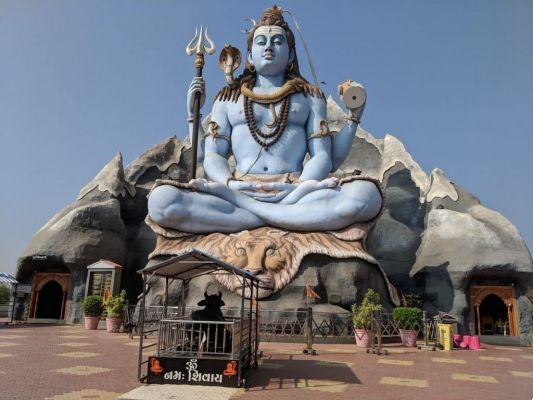
This god has a strong influence not only for the devotees of Hinduism, but also for the practitioners of Yoga and for all people who seek spiritual balance. Even though he is adored by many Indians, Shiva is known for promoting a life full of accomplishments and free from any negativity.




